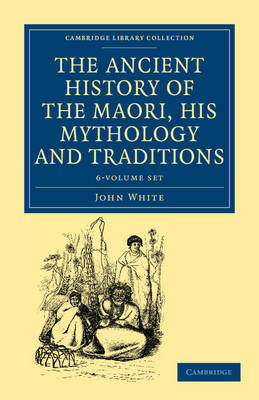Cambridge Library Collection - Anthropology
6 primary works • 7 total works
Volume 1
The Ancient History of the Maori, his Mythology and Traditions: Volume 1, Horo-uta or Taki-tumu Migration
by John White
Volume 2
The Ancient History of the Maori, his Mythology and Traditions: Volume 2, Horo-uta or Taki-tumu Migration
by John White
Volume 3
The Ancient History of the Maori, his Mythology and Traditions: Volume 3, Horo-uta or Taki-tumu Migration
by John White
Volume 4
The Ancient History of the Maori, his Mythology and Traditions: Volume 4, Tai-nui
by John White
Volume 5
The Ancient History of the Maori, his Mythology and Traditions: Volume 5, Tai-nui
by John White
Volume 6
The Ancient History of the Maori, his Mythology and Traditions: Volume 6, Tai-nui
by John White

